Our favourite places to stay on this sleepy Cebu island.
Tara Almusal! Here Are Our Top 7 Pinoy Breakfast Favourites
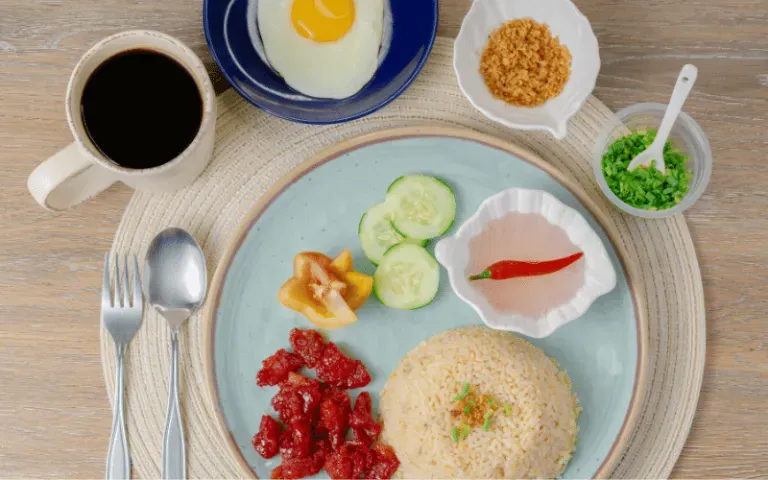
Almusal. Even when you travel around the world, you would know that nothing tastes as lovely as a quintessential Pinoy breakfast. After all, breakfast is the most important meal of the day — or so your nanay tells you.
To say the least, Filipinos take almusal very seriously. As a celebration of our love for it, here’s a list of our Pinoy breakfast favourites! Pass it to your foreign friends or pin it for mornings you’re too tired to decide what to eat.
Also read: Canned Goods Recipes: 10 Emergency Dishes You Can Cook
7 Pinoy almusal favourites
1. Silog

The many portmanteaus to identify breakfast anatomies just prove that Pinoys are crazy about almusal. Silog — literally sinangag (garlic fried rice) and itlog (egg) — is probably the ultimate Pinoy breakfast dish because it’s so effortless and so filling at the same time; not to mention, it involves rice!
Going beyond the basics, Filipinos like adding meat over their silog dishes. Tapsilog, which is tapa over silog, is believed to be the first silog variety as the meat is reminiscent of Spanish influence.
Today, silog variants also include tocilog (tocino silog), longsilog (longganisa silog), cornsilog (corned beef silog), hotsilog (hotdog silog), and many more. To add colour to the dish, Pinoys also like serving silog with atsara (pickled papaya) on the side.
Also read: 10 Best Longganisa in the Philippines & Where to Get Them
2. Pandesal

Kape at pandesal. If you resonate with most Filipinos, you might have gotten a little kilig reading this. Absolutely nothing beats kape (coffee) and pandesal (bread) in the mornings. Some Pinoys prefer to dip the pandesal into their coffee; others just like to have it with all sorts of palaman (spreads).
Literally translating to “salt bread”, pandesal is believed to have been around since the Spanish colonial era. Today, it has become the most popular bread in the Philippines. (Arguably, it’s also the only carb that we’d willingly substitute for rice.)
Today, pandesal is still as adored as ever. In fact, the quarantine has seemingly led more youngsters to learn how to bake their own pandesal! Nowadays, we’ll even find pandesal in different colours and flavours. Needless to say, this Pinoy breakfast staple is here to stay.
Also read: Coffee Culture in the Philippines & Where to Find the Best Brews
3. Champorado

Nothing compares to having a warm bowl of champorado on a rainy morning. Made of cacao and malagkit (sticky rice), this sweet and filling dish is definitely a Pinoy almusal favourite — especially when paired with tuyo (salted dried fish).
Historians claim that champorado comes from Mexico influences. During the Manila Galleon Trade, Mexican traders introduced champurrado to the Philippines. Resemblant of the champorado we now know, Mexican champurrado is actually a chocolate-based drink often paired with churros.
Eventually (and inevitably), rice came into the picture. Filipinos somehow managed to come up with a traditional chocolate porridge that is well-loved today. Now, we can find champorado everywhere: from grocery stores to fine-dining restaurants! But of course, homemade champorado is still the best kind we know.
Also read: 15 Coffee Recipes You Can Easily Master at Home
4. Arroz caldo
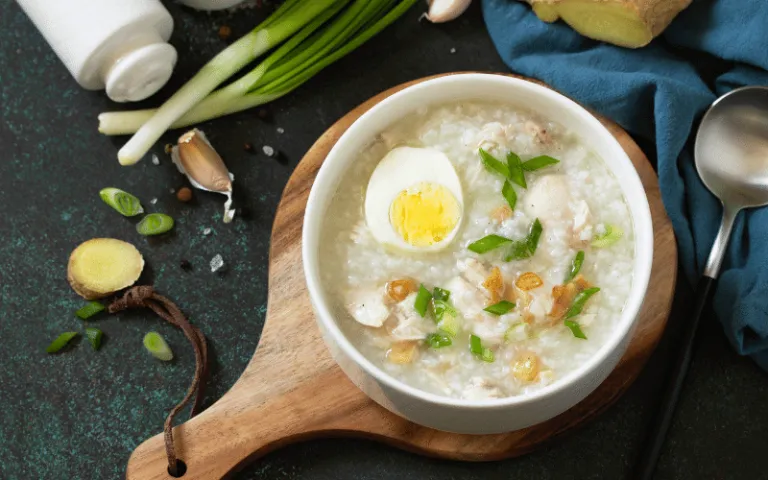
Speaking of soupy rice, let’s talk about arroz caldo. Another Pinoy breakfast favourite, this dish finds its roots in Chinese-Filipino influences. (Evidently, this dish resembles the oriental congee.)
Arroz caldo demands little of its consumers. Most of its ingredients are considered pantry staples — rice, ginger, chicken — making it one of the most convenient almusal choices. Some extras include calamansi, patis (fish sauce), toasted garlic, hard-boiled egg, chicken strips, and scallions; but ultimately, arroz caldo in its basic form has no fuss.
Around the Philippines, you might find variations of arroz caldo as well. Some recipes add saffron — an ingredient that creates a vibrant yellow dish. Others infuse gata (coconut milk) to the soup. In the Visayas region, arroz caldo is also known as pospas, and is typically made with intact chicken parts.
5. Torta
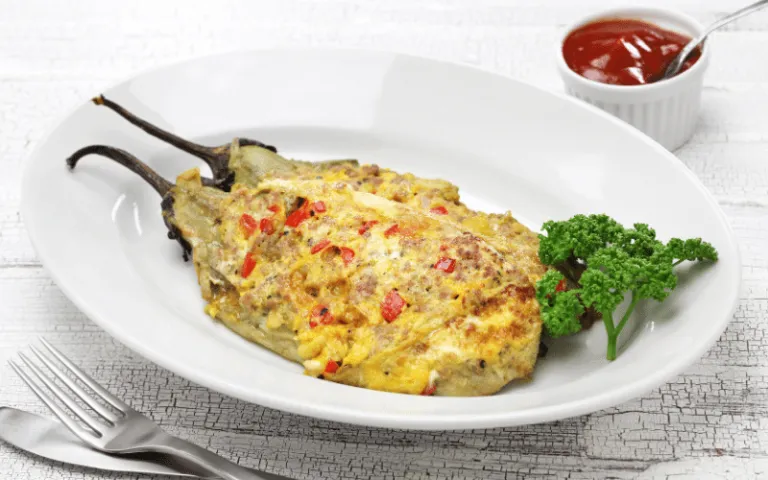
Where Westerners love their omelettes, we Pinoys love our torta. Both have almost the same features, only torta has its ingredients mixed in together with the beaten egg before frying. Typically, Filipinos pair it with sinangag and sweet banana ketchup. Some famous torta variations include tortang talong (eggplant fritter), kalabasa (pumpkin squash), and giniling (ground meat).
It’s worth knowing that torta is not a unique word to the Philippines. Globally, different cultures understand torta diversely. In Spain and Latin America, torta mostly refers to sweet cakes. In Mexico, torta stands for a type of sandwich. Its definitions differ across the world.
Interestingly enough, in some parts of the Philippines, torta also has a different meaning as most Pinoys understand. For Visayans and Mindanaoans, torta can refer to mamón (small cakes), as well! Either way, this dish makes a delectable Filipino almusal.
6. Taho
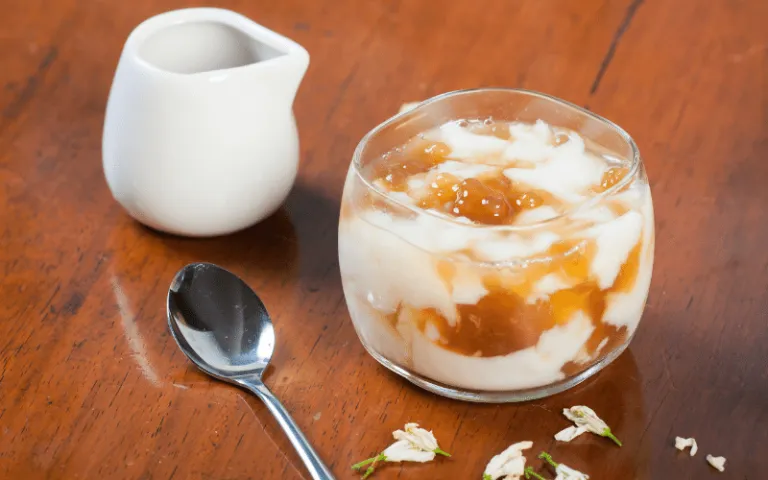
Pinoys might be infamously known for “Filipino time” (a ridiculous habit of being fashionably late), but we certainly rush when we hear a manong shouting “Tahoooo!” nearby.
Made of soft tofu, arnibal (brown sugar syrup), and sago, taho is mostly a saccharine snack, but also functions as a breakfast treat. Most vendors in the Philippines sell hot taho — this way, the caramelised arnibal blends deliciously into the silken tofu. (The sago pearls dutifully add a chewy texture to this custard-like dish.) But when the tropical weather calls for it, chilled taho also satisfies.
Nowadays, you will find taho everywhere. Some Filipino restaurants have even created their own taho recipes — adding unique flavours like ube and pandan. In Baguio, strawberry taho has made a name for itself among tourists.
7. Pancit
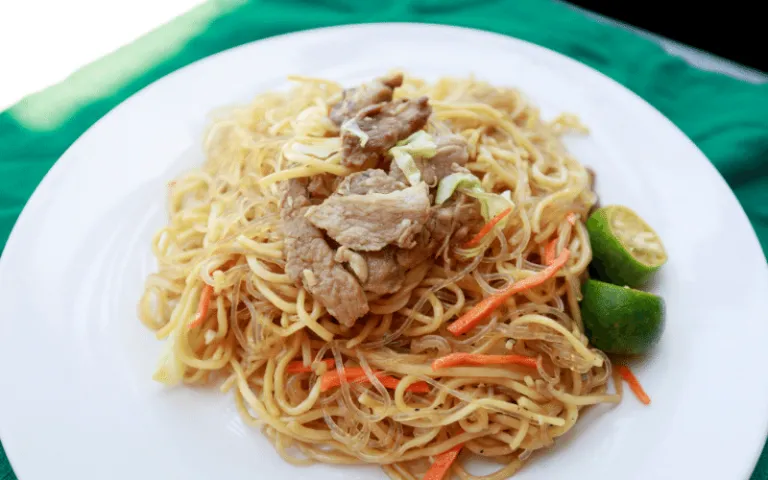
Pancit is another carb Pinoys dearly love. But unlike the other items in this list, pancit makes a versatile dish: we love eating it at any time of the day. A simple but nourishing meal, pancit has a mix of meat, noodles, and vegetables; naturally, it keeps us full and healthy as can be.
In the Philippines, there are countless kinds of pancit. Arguably, the most popular variant is the pancit bihon, as it pairs with anything — even breakfast food. You can add tocino, longganisa, or tapa; everything goes with this savoury meal! (If you’re a carbs-on-carbs person, you can even have pancit bihon with rice, pandesal, or puto (steamed rice cakes)!
Clearly, the Filipino pancit has Chinese origins. In fact, its name is derived from the Hokkien phrase pian i sit which means “something conveniently cooked fast.” Over time, this dish has evolved to suit the Filipino palate. But until today, it is regarded as a dish that promotes long life.
Also read: 10 Must-Try Food in Vietnam Fit for the Filipino Palate
Regardless if you believe in the utmost importance of breakfast, there’s one thing you can’t deny: A good almusal just sets the mood for the day! What are your Pinoy breakfast favourites?
Published at
About Author
Danielle Uy
Subscribe our Newsletter
Get our weekly tips and travel news!
Recommended Articles
10 Bantayan Island Resorts, Hotels, and Rentals for Your Tropical Escape 10 Best Banawe Restaurants for a Mouthwatering Food Trip in QC The promise of new flavours beckons from Banawe.
10 Best Mountain Cafes in the Philippines for Your Peak Coffee Experience Coffee date on the mountains, anyone?
10 Family Outing Ideas in Metro Manila Under ₱500 Looking for a weekend bonding with the family under ₱500? Head to these places, pronto!
10 Fun Things to Do in Manila Alone Live your best life in Manila, even when you’re riding solo.
Latest Articles
Your Guide to the New Korean Visa Application Process for 2025 Major changes ahead for South Korean travel.
Nine Million Tulips: A 'Wicked' Travel Experience Awaits Oz comes to life!
Top 10 Post-Breakup Destinations for Healing and Self-Rediscovery Ready for a solo travel?
Experience the Magic of Christmas Village Pampanga 2024 Christmas season is in the air!
Direct Flights From Manila to Sapporo: Cebu Pacific to Launch in 2025 The perfect time to visit Japan!

